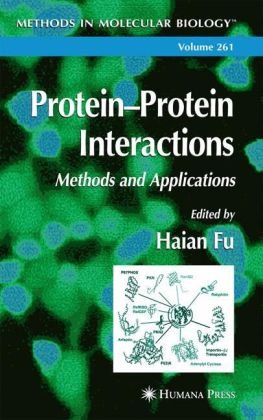Proteins continuously interact with each other to determine cell fate. Consequently, an examination of just when such protein-protein interactions occur and how they are controlled is essential for understanding the molecular mechanism of biological processes, elucidating the molecular basis of diseases, and identifying potential targets for therapeutic interventions. In Protein-Protein Interactions: Methods and Applications, leading experts describe in detail their highly successful biochemical, biophysical, genetic, and computational techniques for studying these interactions. Their readily reproducible methods demonstrate how to identify protein interaction partners, qualitatively or quantitatively measure protein-protein interactions, monitor protein-protein interactions as they occur in living cells, and determine interaction interfaces. The techniques described utilize a variety of cutting-edge technologies, including surface plasmon resonance (SRP), fluorescence resonance energy transfer (FRET), fluorescence polarization (FP), isothermal titration calorimetry (ITC), circular dichroism (CD), protein fragment complementation assays (PCA), various two-hybrid systems, and proteomics- and bioinformatics-based approaches, such as the Scansite program for computational analysis. Each time-tested protocol includes a background introduction outlining the principle behind the technique, lists of equipment and reagents, and tips on troubleshooting and avoiding known pitfalls.
Authoritative and highly practical, Protein-Protein Interactions: Methods and Applications offers both beginning and experienced investigators a full range of the powerful tools needed for deciphering how proteins interact to form biological networks, as well as for unraveling protein-protein interactions in disease in the search for novel therapeutic targets.
Biology
{PDF} Protein-Protein Interactions: Methods and Applications Robert C. Liddington (auth.), Haian Fu (eds.)
$19.99






Reviews
There are no reviews yet.